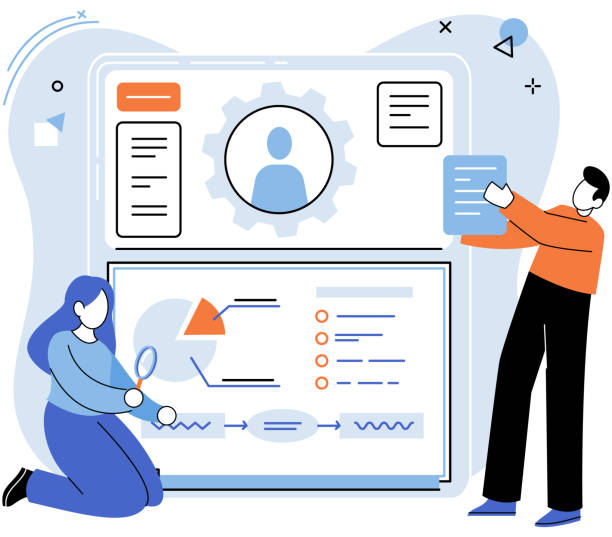Introduction to Professional Website Design and Its Importance

In today’s world, which is heavily dependent on #digital_technology, having a #professional_website is no longer a luxury choice, but an undeniable necessity for any business and individual seeking an effective online presence.
Professional website design is more than just looking beautiful; it means creating a unique user experience, easy accessibility, and valuable content for visitors.
This process involves a deep understanding of audience needs, business goals, and the implementation of up-to-date global standards in coding and visual design.
A successful website is not only a representative of your brand in the virtual space but also a powerful tool for attracting customers, providing services, and increasing sales.
Without a high-quality and high-performing site, businesses easily get lost in the vast ocean of the internet.
The importance of this issue doubles when we consider that many potential customers experience their first encounter with a business through its website.
Therefore, the quality of the first impression is crucial, and website design plays a vital role in creating a positive and lasting image.
This field is constantly evolving, and to stay competitive, one must always be up-to-date and leverage the latest trends and technologies.
Hence, a specialized and up-to-date approach in this field is vital.
Is your online sales not as you expect? With Rasaweb, solve the problem of low sales and poor user experience forever!
✅ Increase visitor-to-customer conversion rate
✅ Create a pleasant user experience and increase customer trust
⚡ Act now to get a free consultation!
Basic Principles and Key Elements in Professional Website Design

To achieve a successful #professional_website_design, adhering to key principles and elements is of utmost importance.
The first and most important principle is User Experience (UX).
A website should be designed in a way that navigation is simple, intuitive, and pleasant.
Users should easily find the information they need and achieve their goals with minimal hassle.
Alongside UX, User Interface (UI) plays a complementary role.
UI relates to the visual appearance of the website, including colors, fonts, layout, and images, which must be both attractive and consistent with the brand identity.
Website loading speed is also a critical factor; today’s users are impatient, and a slowly loading website will lose many customers.
Image optimization, using CDN, and optimized coding are solutions to increase speed.
Responsiveness (responsive design), meaning the website displays correctly on all devices including mobile, tablet, and desktop, is an undeniable necessity today.
Given the significant increase in mobile usage for internet access, Mobile-First design should be prioritized.
Also, Accessibility for people with different abilities should not be overlooked.
These basic principles form the foundation of every professional and user-friendly website, and adherence to them is mandatory for every professional website design specialist.
This section of the article addresses this topic with a specialized and guiding approach.
Strategic Planning and Choosing the Right Platform

Before starting any coding or visual design, precise strategic planning for #professional_website_design is essential.
This stage includes defining website goals, identifying target audiences, competitor analysis, and budget determination.
Following this, one of the most important decisions is choosing the right platform for website development.
Multiple options exist, including Content Management Systems (CMS) like WordPress, Joomla, and Drupal, up to Custom Coding or using specialized e-commerce platforms like Shopify.
Platform selection should be based on specific project needs, future scalability, technical knowledge level, and the need for specific functionalities.
For example, for blogs and small to medium corporate websites, WordPress is a popular choice due to its ease of use and rich plugin ecosystem.
For larger and more complex projects with specific needs, custom coding may provide more flexibility.
This section, with an analytical and guiding approach, helps you make the right decision and choose the appropriate infrastructure for your specialized website development.
Below, a comparative table of popular platforms is provided to assist you in the selection process.
| Feature | WordPress | Custom Code | Shopify |
|---|---|---|---|
| Ease of Use | High (User-friendly) | Low (Requires programming knowledge) | High (E-commerce focused) |
| Flexibility | Medium to High (with plugins) | Very High (fully customizable) | Medium (limited to ecosystem) |
| Initial Cost | Medium (Hosting and plugins) | High (Development from scratch) | Medium (Monthly subscription) |
| Maintenance and Updates | Medium (Plugins and core) | High (Developer responsibility) | Low (Platform manages) |
| Main Purpose | Blog, Corporate, Small Store | Complex Projects, Specific Needs | Online Stores |
Content: The Beating Heart of Every Professional Website

After your technical infrastructure and #professional_website_design are ready, it’s time for content; an element that breathes life into your website and makes it valuable for your audience.
High-quality content not only attracts users but also encourages them to spend more time on your site and convert into customers.
The question is: “What kind of content is truly effective?” The answer lies in combining useful, entertaining, and understandable information.
Your content should provide accurate and up-to-date information, but at the same time, it should be enjoyable for the audience to read.
This includes blog articles, product descriptions, videos, infographics, and high-quality images.
Content being SEO-friendly is also highly important.
Proper use of keywords, engaging titles, and a suitable structure for search engines significantly helps your website get noticed.
Content marketing is a long-term strategy that helps you become recognized as an authority in your industry and gain audience trust.
A professional website design without strong content is like a luxury car without fuel.
Therefore, investing in valuable content creation and planning for its continuous updates is an inseparable part of your website’s success.
This section highlights the importance of content with a question-provoking and educational approach.
Are you worried about your e-commerce site’s low conversion rate and not achieving your desired sales?
Rasaweb is your specialized solution for having a successful e-commerce site.
✅ Significant increase in conversion rate and sales
✅ Professional and user-friendly design to gain customer satisfaction
⚡ Ready for a transformation in online sales? Get a free consultation!
Search Engine Optimization (SEO) in Professional Website Design
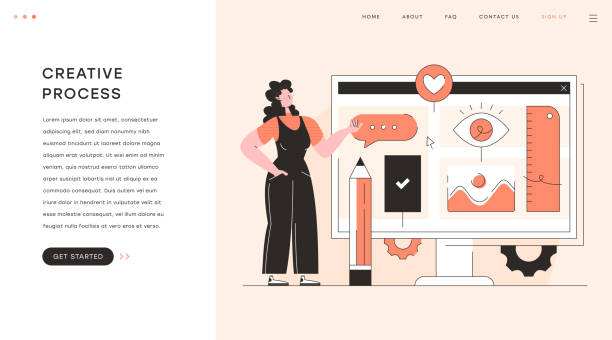
A #professional_website_design without Search Engine Optimization (SEO) is like building a beautiful store in the desert; no one will find it.
SEO is a process that helps your website rank higher in Google and other search engine results, thereby attracting more organic traffic.
This process is divided into three main sections: On-Page SEO, Off-Page SEO, and Technical SEO.
In On-Page SEO, optimizing titles, meta descriptions, keywords in the text, image alt tags, and URL structure is important.
Off-Page SEO includes building high-quality backlinks from reputable websites and engaging in social media activities.
Technical SEO addresses infrastructure aspects of the website such as loading speed, responsiveness, Robots.txt file, Sitemap, and HTML code structure.
All these factors help search engines better understand your website and display it to relevant users.
Investing in SEO brings long-term and sustainable return on investment and sets your website on the path to success.
An advanced website should be built with an SEO approach from the very beginning of its design, rather than being added after completion.
This section, with a specialized and guiding approach, clarifies the vital aspects of SEO.
Website Security and Maintenance After Design

After completing the #professional_website_design process and launching it, your work is not over.
In fact, continuous security and maintenance are of vital importance to ensure your website remains active, secure, and up-to-date.
Cyber threats in the online space are increasing, and a website without adequate protection will be an easy target for hackers and malware.
Installing an SSL/TLS certificate to encrypt communications and ensure the security of user information is an essential step.
Regularly updating the Content Management System (CMS), plugins, and themes to fix security vulnerabilities and benefit from the latest features are other vital measures.
Regular backups of all website data ensure that in case of any problem or cyber attack, your information will not be lost and can be easily restored.
Monitoring website performance, identifying and resolving potential errors, and optimizing the database also help maintain the site’s speed and efficiency.
A comprehensive approach to website maintenance not only guarantees its security but also improves user experience and aids site SEO.
Failure to address these issues can lead to data loss, lower search engine rankings, and damage to brand reputation.
This section covers important aspects of security and maintenance with an explanatory and informative approach.
Website Performance Review and Analysis
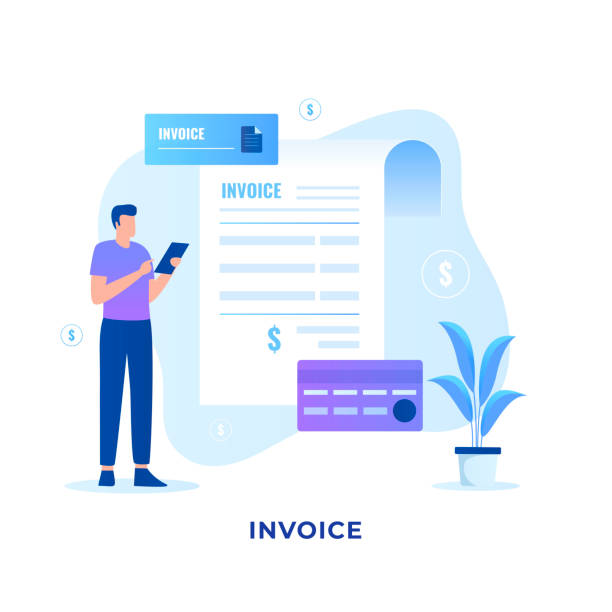
After launching and maintaining your #professional_website_design, the next step is performance analysis and review.
Without accurate data and statistics, you cannot understand how successful your website has been in achieving its goals.
Analytical tools like Google Analytics provide valuable information about user behavior on your website.
This information includes the number of visitors, time spent on the site, pages visited, traffic sources (search engines, social networks, referrals), and Bounce Rate.
Conversion Rate, which shows what percentage of visitors have become customers or performed a desired action (such as filling out a form or making a purchase), is one of the most important metrics.
Analyzing this data helps you identify your website’s strengths and weaknesses and design optimization strategies.
For example, if you have a high bounce rate, it might indicate irrelevant content or a poor user experience.
Understanding these figures is essential for the continuous improvement of a professional website and increasing its return on investment.
This section, with an analytical and specialized approach, clarifies the importance of data-driven decisions in website success.
Below, a table of the most important website performance indicators is provided.
| Indicator (KPI) | Description | Importance in Professional Website Design |
|---|---|---|
| Website Traffic | Total number of visitors to the website | Indicates the success of marketing and SEO strategies. Increasing it is the main goal. |
| Bounce Rate | Percentage of visitors who view only one page and leave the website. | Indicates the quality of User Experience (UX) and content relevance to user needs. Lower rate is better. |
| Avg. Time on Page |
Average time users spend on a specific page. | Indicates the attractiveness and usefulness of the content. More time is better. |
| Conversion Rate | Percentage of visitors who perform a desired action (such as purchase, registration). | The most important metric for measuring ROI (Return on Investment) of the website. Higher rate is better. |
| Page Load Speed | Time it takes for a page to fully load. | Crucial for UX and SEO. Faster speed leads to user satisfaction and better search ranking. |
The Role of UI/UX in the Success of Professional Website Design
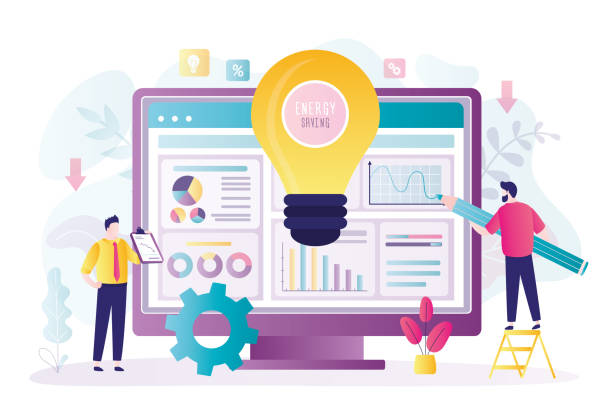
In the increasing digital competition, the role of UI (User Interface) and UX (User Experience) in #professional_website_design has become more important than ever.
It’s no longer enough to just have a website; you need a website that users love to interact with.
UX relates to the overall feeling of the user when using the website.
Is the website logical and easy to use? Can the user easily find what they are looking for? UX research includes user interviews, customer journey analysis, and usability tests.
In contrast, UI deals with the visual aspects of the website: how visual elements (buttons, icons, images, typography) are arranged and how they interact with each other.
An attractive UI consistent with brand identity is the first thing that captures user attention and encourages them to stay on the site.
A successful combination of UI and UX not only leads to increased user satisfaction but also improves conversion rates and enhances customer loyalty.
Designing a professional site that is both beautiful and functional requires a deep understanding of user psychology and design trends.
This section explains the human and artistic dimensions of web design with an explanatory and engaging approach.
Losing potential customers due to an unprofessional website? Rasaweb is your answer! With our specialized corporate website design services:
✅ Enhance your business’s credibility and standing
✅ Experience attracting more targeted customers
⚡ Act now to get a free consultation!
Common Mistakes in Website Design and Ways to Avoid Them
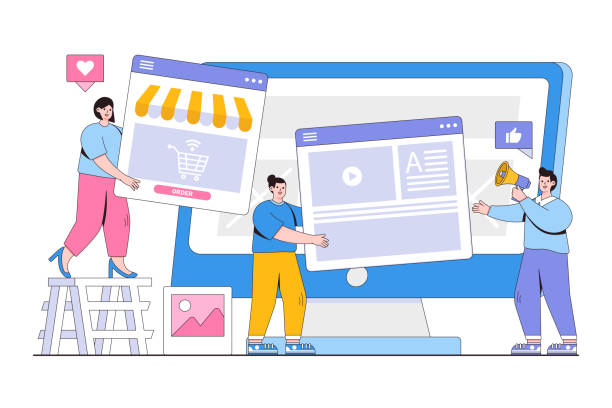
Even the most experienced designers may make mistakes in the #professional_website_design process that can harm user experience and negatively impact website performance.
One of the most common mistakes is ignoring responsiveness.
Despite over half of internet traffic coming from mobile devices, some websites are still not optimized for proper display on these devices.
Another mistake is overcomplicating navigation.
Confusing menus and cluttered structures frustrate users and cause them to quickly leave the site.
Slow loading speed is also the silent killer of many websites; every second of delay can lead to the loss of a significant percentage of visitors.
Lack of image optimization, use of unnecessary code, and improper hosting are major causes of site slowness.
Furthermore, low-quality or irrelevant content, and the lack of clear Call-to-Action (CTA), can render your efforts fruitless.
To avoid these mistakes, you must focus on user experience, prioritize mobile-first design, optimize speed, and produce engaging and targeted content.
User feedback and data analysis are powerful tools for identifying and resolving these issues over time.
Every specialized website development requires attention to detail and avoidance of common mistakes.
This section, with a question-provoking and guiding approach, helps you stay away from design pitfalls.
The Future of Professional Website Design and Upcoming Trends

The world of #professional_website_design is rapidly evolving and holds an exciting future.
One of the most important upcoming trends is Artificial Intelligence (AI) and Machine Learning in web design.
AI-powered tools can automate the design process, provide suggestions based on user data, and even generate content.
Progressive Web Apps (PWAs), which combine the capabilities of mobile applications with the flexibility of websites, are also becoming increasingly popular.
Voice search and optimizing websites to respond to voice commands are another trend that designers should pay attention to.
Minimalist and simplistic designs, subtle animations, and micro-interactions to enhance user experience will also continue.
Web 3.0 and blockchain technology may also significantly impact how websites are built and interacted with in the near future.
The focus on personalized user experience, where the website offers different content and layouts based on each user’s behavior and preferences, will also gain high importance.
To stay at the forefront of this industry, advanced web design specialists must constantly learn and adapt to these changes.
This section, with an informative and analytical approach, outlines the future landscape of the web.
Frequently Asked Questions
| Question | Answer |
|---|---|
| What does professional website design mean? | Professional website design refers to creating a user-friendly, visually appealing, fast, secure, and search-engine-optimized website that meets business goals. |
| What are the most important features of a professional website? | Responsiveness, high speed, security, SEO-friendliness, excellent User Experience (UX) and User Interface (UI), high-quality content, and strong branding. |
| Why is responsive design crucial for a professional website? | Responsive design ensures your website displays correctly on any device (computer, tablet, mobile), which is very important for user experience and Google ranking. |
| What is the role of UI and UX in professional website design? | UX (User Experience) focuses on ease of use and user satisfaction, while UI (User Interface) deals with the visual appearance and user interaction with the website. Both are essential for attracting and retaining the audience. |
| What is the place of SEO in professional website design? | SEO is a core pillar. A professional website must have a strong technical structure, optimized content, and high speed to rank well in search engine results and be seen. |
| What tools or platforms can be used for professional website design? | Content management platforms like WordPress, Joomla, or Drupal, web development frameworks like React, Angular, or Vue.js, and graphic design tools like Figma or Adobe XD. |
| What are the main stages of designing a professional website? | Planning and research, wireframing and mockup design, development and coding, content entry, testing and review, and finally launch and maintenance. |
| What is the importance of security in a professional website? | Website security is crucial for protecting user information and business credibility. Using SSL/TLS, firewalls, regular backups, and updates are vital measures. |
| Does a professional website require maintenance after launch? | Yes, regular maintenance including software updates, checking broken links, performance monitoring, backups, and adding fresh content is essential for maintaining website functionality and ranking. |
| What distinguishes a professional website from an amateur one? | A professional website focuses on business goals, provides an exceptional user experience, adheres to high technical standards, and is continuously optimized for improvement, whereas an amateur website usually lacks these features. |
And other services of Rasaweb Advertising Agency in the field of advertising
Smart Marketing Automation: A fast and efficient solution for increasing sales, focusing on attractive user interface design.
Smart Google Ads: A fast and efficient solution for increasing click-through rates, focusing on the use of real data.
Smart Advertorials: A professional solution for increasing sales, focusing on precise audience targeting.
Smart UI/UX: Designed for businesses seeking to increase click-through rates through marketing automation.
Smart Digital Branding: A combination of creativity and technology for campaign management using real data.
And over hundreds of other services in the field of internet advertising, advertising consulting, and organizational solutions
Internet Advertising | Advertising Strategy | Advertorial
Resources
- Newest Website Design Trends
- Professional Website Design Services
- The Digital Future and the Role of Websites
- New Approaches in Web Development
✅
? Are you ready to transform your business in the digital world? With Rasaweb Afarin Digital Marketing Agency, from SEO strategies to professional WordPress website design, achieve the best results and build a bright future for your brand.
📍 Tehran, Mirdamad Street, Next to Central Bank, Kazeroon Southern Alley, Ramin Alley, No. 6


